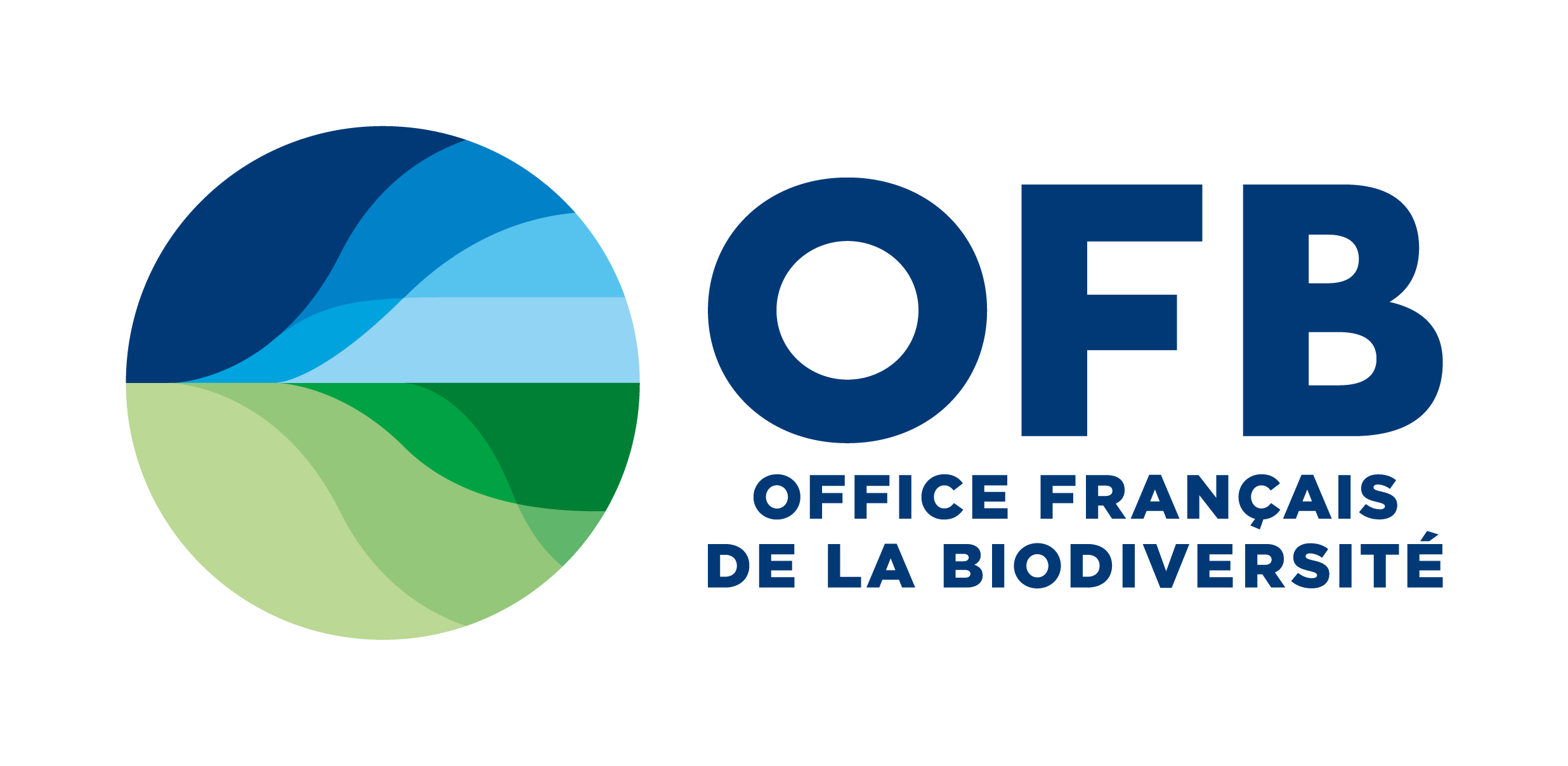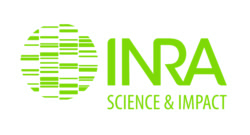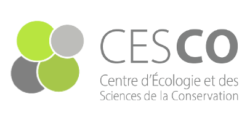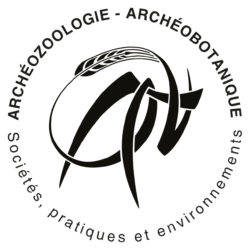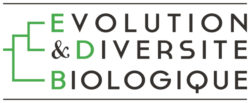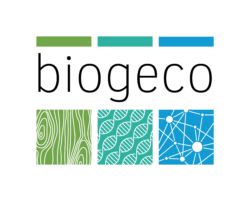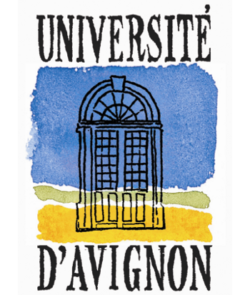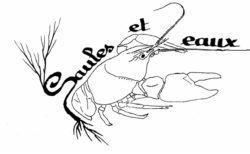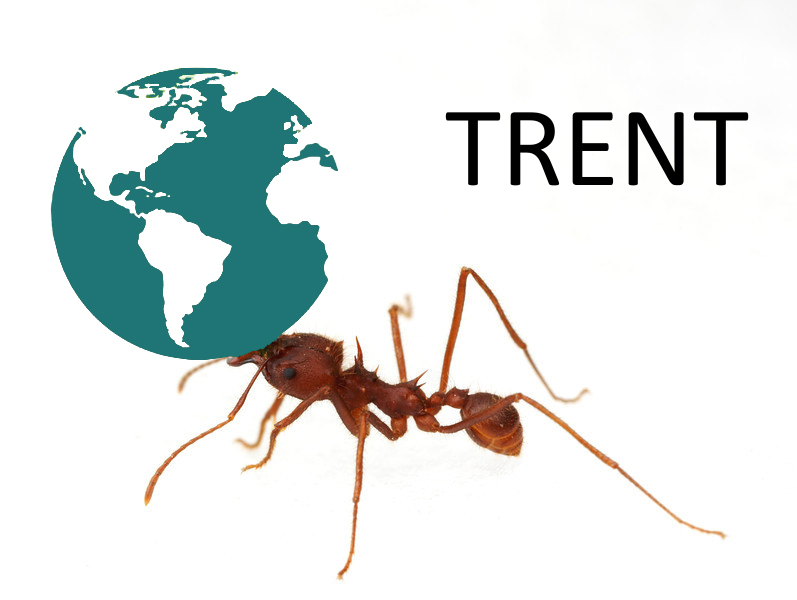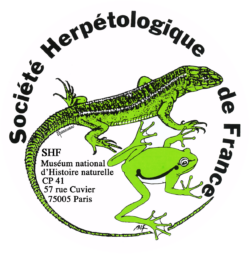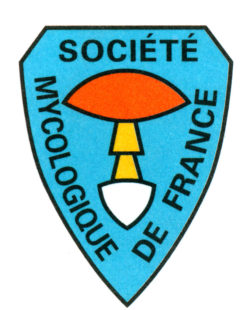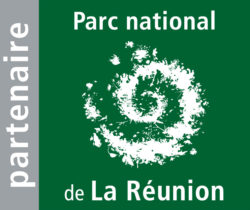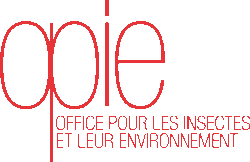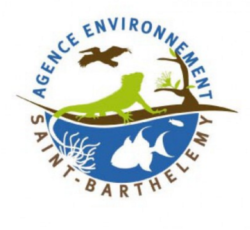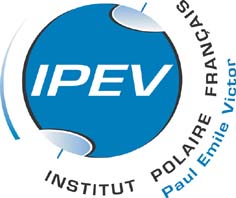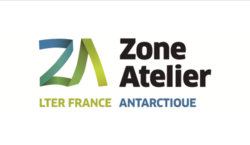Références bibliographiques relatives à l’écologie des invasions biologiques
Pour trouver un mot, tapez celui-ci dans la barre de recherche de votre navigateur
Albrecht, M., & al. 2016. Pollinator-mediated impacts of alien invasive plants on the pollination of native plants: the role of spatial scale and distinct behaviour among pollinator guilds. Biological Invasions 18(7): 1801-1812. Lire
Allen, M. R. & Shea, K. 2006. Spatial Segregation of Congeneric Invaders in Central Pennsylvania, USA. Biological Invasions 8(3): 509-521. Lire
Allen, C. R., & al. 2013. Predictors of regional establishment success and spread of introduced non-indigenous vertebrates. Global Ecology and Biogeography 22(7): 889-899. Lire
Alpert, P. 2006. The advantages and disadvantages of being introduced. Biological Invasions 8(7): 1523-1534. Lire
Amundsen, P.-A., & al. 2012. Invader population speeds up life history during colonization. Biological Invasions 14(7): 1501-1513. Lire
Andréfouët, & al. H. 2015. Conservation of low-islands: high priority despite sea-level rise. A comment on Courchamp et al. Trends in ecology and evolution 30 (1): 1-2. doi:10.1016/j.tree.2014.10.001. Lire
Anonymes. 2009 (a). List of Species Alien in Europe and to Europe, DAISIE, Handbook of Alien Species in Europe, chap.11, 133-263.
Anonymes. 2009 (b). Species Accounts of 100 of the Most Invasive Alien Species in Europe. DAISIE, Handbook of Alien Species in Europe, chap.13, 269-374.
Anonymes. 2012. The impacts of invasive alien species in Europe, EEA Technical report. 16: 118 pp. Lire
Anson, J. R., & al. 2013. Stress Triangle: Do Introduced Predators Exert Indirect Costs on Native Predators and Prey? PLoS ONE 8(4): e60916. Lire
Aragón, R., & al. 2014. Exotic species as modifiers of ecosystem processes: Litter decomposition in native and invaded secondary forests of NW Argentina. Acta Oecologica 54: 21-28. Lire
Arndt, E. 2006. Niche Occupation by Invasive Ground-Dwelling Predator Species in Canarian Laurel Forests. Biological Invasions 8(4): 893-902. Lire
Aslan, C. E., & al. 2012. Effects of native and non-native vertebrate mutualists on plants. Conserv Biol26(5): 778-789. Lire
Ayres, D., & al. 2008. Introduction to “Ecological and Evolutionary Consequences after Invaders Hybridize”. Biological Invasions 11(5): 1087-1088. Lire
Bacigalupe, L. D. 2008. Biological invasions and phenotypic evolution: a quantitative genetic perspective. Biological Invasions 11(10): 2243-2250. Lire
Bailey, J. K., & al. 2006. Rapid shifts in the chemical composition of aspen forests: an introduced herbivore as an agent of natural selection. Biological Invasions 9(6): 715-722. Lire
Bampfylde, C. J., & al. 2009. A literature analysis of freshwater invasive species research: are empiricists, theoreticians, and economists working together? Biological Invasions 12(5): 1207-1219. Lire
Bando, K. J. 2006. The Roles of Competition and Disturbance in a Marine Invasion. Biological Invasions8(4): 755-763. Lire
Bañón Díaz, R. 2012. Introducción al estudio de las especies exóticas marinas en galicia . Revista Galega dos Recursos Mariños (Monog.), 3: 1-67. Lire
Barbault, R., Atramentowicz M. 2010. Les invasions biologiques, une question de natures et sociétés. Éditions Quæ, 192 p. Lire
Barlow, N. D. & J. M. Kean 2004. Resource Abundance and Invasiveness: A Simple Model. Biological Invasions 6(3): 261-268. Lire
Barney, J. N. & T. H. Whitlow. 2007. A unifying framework for biological invasions: the state factor model. Biological Invasions 10(3): 259-272. Lire
Bauer, J. T. 2012. Invasive species: “back-seat drivers” of ecosystem change? Biological Invasions 14(7): 1295-1304. Lire
Beisel, J-N, Levêque C. 2009. Les eaux douces propices aux invasions ? Dossier pour la science, N°65 Octobre décembre 2009 : 26 Lire
Beisel, J.-N., Levêque, C. 2009. Introduction d’espèces dans les milieux aquatiques, faut-il avoir peur des invasions biologiques ? Quae, 127 pp. Lire
Beisner, B. E., & al. 2006. Environmental Productivity and Biodiversity Effects on Invertebrate Community Invasibility. Biological Invasions 8(4): 655-664. Lire
Bennett, A. E. 2013. Can plant–microbe–insect interactions enhance or inhibit the spread of invasive species? Functional Ecology 27(3): 661-671. Lire
Bennett, J. A., & al. 2016. Species pools, community completeness and invasion: disentangling diversity effects on the establishment of native and alien species. Ecology Letters 19(12): 1496-1505. Lire
Berglund, H., & al. 2012. Associations of invasive alien species and other threats to IUCN Red List species (Chordata: vertebrates). Biological Invasions 15(5): 1169-1180. Lire
Beric, B. & H. J. MacIsaac. 2015. Determinants of rapid response success for alien invasive species in aquatic ecosystems. Biological Invasions 17(11): 3327-3335. Lire
Bering, J. & al. 2013. Preventing the Spread of Aquatic Invasive Species into Lake Champlain, Middlebury College: 92 pp. Lire
Bermond, G., & al. 2013. Estimation of the dispersal of a major pest of maize by cline analysis of a temporary contact zone between two invasive outbreaks. Mol Ecol 22(21): 5368-5381. Lire
Besacier-Monbertrand, A.-L., & al. 2009. Alien aquatic macroinvertebrates along the lateral dimension of a large floodplain. Biological Invasions 12(7): 2219-2231. Lire
Blackburn, T. M., & al. 2014. A Unified Classification of Alien Species Based on the Magnitude of their Environmental Impacts. PLoS Biol 12(5): e1001850. Lire
Blanchet, N., & al. 2011. Diagnostic sur l’invasion biologique aux Antilles françaises. Stratégie de suivi et de prévention. Départements de la Guadeloupe et de la Martinique. 143 p. Lire
Bøhn, T., & al. 2007. Competitive exclusion after invasion? Biological Invasions 10(3): 359-368. Lire
Braga, R. R., et al. 2018. Structuring evidence for invasional meltdown: broad support but with biases and gaps. Biological Invasions 20(4): 923-936. Lire
Brindley, J., & al. 2005. Invasion Waves in Populations with Excitable Dynamics. Biological Invasions 7(5): 807-816. Lire
Briski, E., & al. 2016. Are genetic databases sufficiently populated to detect non-indigenous species? Biological Invasions 18(7): 1911-1922. Lire
Briski, E., & al. 2010. Use of DNA barcoding to detect invertebrate invasive species from diapausing eggs. Biological Invasions 13(6): 1325-1340. Lire
Brockerhoff, E. G. &A. M. Liebhold. 2017. Ecology of forest insect invasions. Biological Invasions 19(11): 3141-3159. Lire
Brotons, L. 2014. Species Distribution Models and Impact Factor Growth in Environmental Journals: Methodological Fashion or the Attraction of Global Change Science. PLoS ONE 9(11): e111996. Lire
Burfeind, D. D., & al. 2012. Performance of non-native species within marine reserves. Biological Invasions15(1): 17-28. Lire
Byers, J. E. & E. E. Sotka. 2019. Promoting invasive species to enhance multifunctionality in a native ecosystem still requires strong(er) scrutiny. Biological Invasions 21(2): 277-280. Lire
Cadotte, M. W., & al. 2017. Are urban systems beneficial, detrimental, or indifferent for biological invasion? Biological Invasions 19(12): 3489-3503. Lire
Callaway, R. M., & al. 2006. Are trans-Pacific invasions the new wave? Biological Invasions 8(7): 1435-1437. Lire
Cartwright, J. J., N. 2006. Alien Invaders, a guide to non-native species of the Britisher Isles, Book works, 28 pp. Lire
Castilla, J. C., & al. 2005. Down under the southeastern Pacific: marine non-indigenous species in Chile. Biological Invasions 7(2): 213-232. Lire
Charlez, A. 2012. Des espèces sauvages envahissantes. Faune Sauvage: 39-43.
Cheng, D., & al. 2016. Meta-analysis reveals asymmetric reduction in the genetic diversity of introduced populations of exotic insects. Biological Invasions 18(4): 1163-1175. Lire
Chen, X. 2012. Distribution patterns of invasive alien species in Alabama, USA. Management of Biological Invasions 3(1): 25-36. Lire
Chessman, B. C. 2013. Do protected areas benefit freshwater species? A broad-scale assessment for fish in Australia’s Murray–Darling Basin. Journal of Applied Ecology 50(4): 969-976. Lire
Clergeau, P., Croci, S. & Jokimaki, J. 2004. How useful are urban island ecosystems for defining invader patterns ? Environmental Conservation 31: 181-184. Lire
Clergeau, P. & Nunez, M. 2006. The language of fighting invasive species. Science 311: 951.
Colautti, R. I., & al. 2005. Realized vs apparent reduction in enemies of the European starling. Biological Invasions 7(4): 723-732. Lire
Colautti, R. I., & al. 2006. Propagule Pressure: A Null Model for Biological Invasions. Biological Invasions8(5): 1023-1037. Lire
Colautti, R. I., & al. 2006. Characterised and Projected Costs of Nonindigenous Species in Canada. Biological Invasions 8(1): 45-59. Lire
Crego, R. D., & al. 2016. A synergistic trio of invasive mammals? Facilitative interactions among beavers, muskrats, and mink at the southern end of the Americas. Biological Invasions 18(7): 1923-1938. Lire
Cristescu, B. &M. Boyce, S. 2013. « Focusing Ecological Research for Conservation. AMBIO 42(7): 805-815. Lire
Crooks, J. A., & al. 2010. Aquatic pollution increases the relative success of invasive species. Biological Invasions 13(1): 165-176. Lire
Crowder, D. W. & W. E. Snyder. 2010. Eating their way to the top? Mechanisms underlying the success of invasive insect generalist predators. Biological Invasions 12(9): 2857-2876. Lire
Csóka, G., & al. 2017. Non-native gall-inducing insects on forest trees: a global review. Biological Invasions19(11): 3161-3181. Lire
DAISIE. 2008. Handbook of Alien Species in Europe. 421p. Lire
David Smith, L., & al. 1999. Invasion Pressure to a Ballast-flooded Estuary and an Assessment of Inoculant Survival. Biological Invasions 1(1): 67-87. Lire
Dawson, W. & al. 2013. Correlations between global and regional measures of invasiveness vary with region size. NeoBiota 16: 59-80. Lire
Degrassi, A. L. 2018. Hemlock woolly adelgid invasion affects microhabitat characteristics and small mammal communities. Biological Invasions 20(8): 2173-2186. Lire
Dewarumez, J.-M. & al. 2011. Les espèces marines animales et végétales introduites dans le bassin Artois-Picardie, UMR CNRS 8187 LOG et Agence de l’Eau Artois-Picardie: 140 pp. Lire
Dextrase, A. J. & Mandrak, N. E. 2006. Impacts of Alien Invasive Species on Freshwater Fauna at Risk in Canada. Biological Invasions 8(1): 13-24. Lire
Dick, J. T. A., & al. 2012. Ecological impacts of an invasive predator explained and predicted by comparative functional responses. Biological Invasions 15(4): 837-846. Lire
Dick, J. T. A., & al. 2017. Functional responses can unify invasion ecology. Biological Invasions 19(5): 1667-1672. Lire
Dick, J. T. A., & al. 2017. Fictional responses from Vonesh et al. Biological Invasions 19(5): 1677-1678. Lire
Drake, J. M. & Lodge, D. M. 2006. Allee Effects, Propagule Pressure and the Probability of Establishment: Risk Analysis for Biological Invasions. Biological Invasions 8(2): 365-375. Lire
Duggan, I. C. & K. S. Duggan. 2011. Are botanical gardens a risk for zooplankton invasions? Biological Invasions 13(12): 2997-3003. Lire
Duncan, R. P. 2016. How propagule size and environmental suitability jointly determine establishment success: a test using dung beetle introductions. Biological Invasions 18(4): 985-996. Lire
Eschen R., Holmes T., Smith D., Roques A., Santini S., Kenis M., 2014. Likelihood of establishment of tree pests and diseases based on their worldwide occurrence as determined by hierarchical cluster analysis. Forest Ecology and Management 315, 103–111. Lire
Eschen R., Roques A., Santini, A. 2015. Taxonomic dissimilarity in patterns of interception and establishment of alien arthropods, nematodes and pathogens affecting woody plants in Europe. Diversity and Distributions, 21 (1), 36-45. Lire
Esler, K. J., & al. 2010. How wide is the “knowing-doing” gap in invasion biology? Biological Invasions12(12): 4065-4075. Lire
Essl, F., & al. 2018. Which Taxa Are Alien? Criteria, Applications, and Uncertainties. BioScience 68(7): 496-509. Lire
Essl F., & al. 2011. Reply to Keller and Springborn: No doubt about invasion debt. Proceedings of the National Academy of Sciences of USA. Letters online only June 21, 2011, 108 (25). Lire
Fausch, K. D. 2007. A paradox of trout invasions in North America. Biological Invasions 10(5): 685-701. Lire
Feng, X. & Papeş, M. 2017. Physiological limits in an ecological niche modeling framework: A case study of water temperature and salinity constraints of freshwater bivalves invasive in USA. Ecological Modelling346(Supplement C): 48-57. Lire
Ficetola, F., Bonin, A. & Miaud, C. 2008. Population genetics reveal origin and number of founders in a biological invasion. Molecular Ecology 17: 773-782. Lire
Fisichelli, N. A. & Miller, K.M. 2018. Weeds, worms, and deer: positive relationships among common forest understory stressors. Biological Invasions 20(5): 1337-1348. Lire
Fitzpatrick, B. M., & al. 2011. What can DNA tell us about biological invasions? Biological Invasions 14(2): 245-253. Lire
Flores-Moreno, H. & Moles, A. T. 2013. A Comparison of the Recruitment Success of Introduced and Native Species Under Natural Conditions. PLoS ONE 8(8): e72509. Lire
Floyd, R., & al. 2010. Common goals: policy implications of DNA barcoding as a protocol for identification of arthropod pests. Biological Invasions 12(9): 2947-2954. Lire
Floyd-Hanna, L. & al. 2012. Effects of fires and insects on fuel structures in piñon-juniper and post-fire invasive communities, Prescott college: 1-45. Lire
Frehse, F. d. A., & al. 2016. Non-native species and invasion biology in a megadiverse country: scientometric analysis and ecological interactions in Brazil. Biological Invasions 18(12): 3713-3725. Lire
Früh, D., & al. 2012. Physicochemical and morphological degradation of stream and river habitats increases invasion risk. Biological Invasions 14(11): 2243-2253. Lire
Gaertner, M., & al. 2017. Non-native species in urban environments: patterns, processes, impacts and challenges. Biological Invasions 19(12): 3461-3469. Lire
Galil, B. S., & al. 2009. Alien Marine Biota of Europe. DAISIE, Handbook of Alien Species in Europe: 93-104. Lire
Gandhi, K. J. K. & Herms, D. A. 2009. Direct and indirect effects of alien insect herbivores on ecological processes and interactions in forests of eastern North America. Biological Invasions 12(2): 389-405. Lire
García-Ramos, G., & al. 2015. Evolution of resistance by a native competitor can lead to invasion collapse in disease-mediated invasions. Biological Invasions 17(10): 2863-2879. Lire
Garnas J., & al. 2016. Complex patterns of global spread in invasive insects: ecoevolutionary and management consequences. Biological Invasions 18 (4), 935-952. Lire
Garnier, L. (ed.). 2008. Entre l’Homme et la nature, une démarche pour des relations durables Réserves de Biosphère – Notes techniques 3 – 2008 UNESCO, Paris, 142p. Lire
Ghelardini, L., & al. 2017. Ecology of invasive forest pathogens. Biological Invasions 19(11): 3183-3200. Lire
Gérard, A., J, & al. 2016. Knocking on heaven’s door: Are novel invaders necessarily facing naïve native species on islands? Plos One 11(3): e0151545. doi:10.1371/journal.pone.0151545. Lire
Gerlach, J., & al. 2013. Terrestrial invertebrates as bioindicators: an overview of available taxonomic groups. Journal of Insect Conservation 17(4): 831-850. Lire
Golani D., Orsi-Relini L., Massutì, Quignard J.-P., 2002. Atlas of exotic species in the Mediterranean. 1. Fishes. CIESM publishers (Commission Internationale pour l’exploration Scientifique de la Mer Méditerranée), Monaco, Frédéric Briand editor : 1-254. Illustré couleur. Lire
Goulletquer, P. 2016. Le guide des organismes exotiques marins. 304 p. Lire
Goudard A. 2007. Fonctionnement des écosystèmes et invasions biologiques. Importance de la biodiversité et des intéractions interspécifiques, thèse 216p. Lire
Guo, Q., & al. 2011. Latitudinal shifts of introduced species: possible causes and implications. Biological Invasions 14(3): 547-556. Lire
Haran J., Roques A., Bernard A., Robinet C., Roux G. 2015. Altitudinal barrier to the spread of an invasive species: Could the Pyrenean chain slow the natural spread of the pinewood Nematode?. Plos One, 25 p. DOI : 10.1371/journal.pone.0134126. Lire
Harwood, J. D., & al. 2008. Differential impact of adults and nymphs of a generalist predator on an exotic invasive pest demonstrated by molecular gut-content analysis. Biological Invasions 11(4): 895-903. Lire
Hatcher, M. J., & al. 2012. Disease emergence and invasions. Functional Ecology 26(6): 1275-1287. Lire
Haury, J. & Clergeau, P. 2014. Les espèces invasives en Bretagne : Plantes et vertébrés continentaux. Les Cahiers Naturalistes de Bretagne, Biotope ed., 143 p. Lire
Hayes, K. R. 2002 (a). Identifying Hazards in Complex Ecological Systems. Part 1: Fault-tree Analysis for Biological Invasions. Biological Invasions 4(3): 235-249. Lire
Hayes, K. R. 2002 (b). Identifying Hazards in Complex Ecological Systems. Part 2: Infection Modes and Effects Analysis for Biological Invasions. Biological Invasions 4(3): 251-261. Lire
Hayes, K. R. & Barry, S. C. 2007. Are there any consistent predictors of invasion success? Biological Invasions 10(4): 483-506. Lire
Heger, T., & al. 2013. Conceptual Frameworks and Methods for Advancing Invasion Ecology. AMBIO 42(5): 527-540. Lire
Herder, J. & al. 2012. Environmental DNA – een nieuwe inventarisatiemethode. tijdschrift 14(2): 32-38. Lire
Hewitt, C. L. & Huxel, G. R. 2002. Invasion Success and Community Resistance in Single and Multiple Species Invasion Models: Do the Models Support the Conclusions? Biological Invasions 4(3): 263-271. Lire
Hill, M. P., & al. 2016. Drivers, impacts, mechanisms and adaptation in insect invasions. Biological Invasions18(4): 883-891. Lire
Hillman, B. I. 2001. Biology and Evolution of Beneficial and Detrimental Viruses of Animals, Plants, and Fungi. Biological Invasions 3(3): 255-262. Lire
Hui, C., & al. 2017. Ranking of invasive spread through urban green areas in the world’s 100 most populous cities. Biological Invasions 19(12): 3527-3539. Lire
Hui, C., & al. 2016. Defining invasiveness and invasibility in ecological networks. Biological Invasions 18(4): 971-983. Lire
Hulme, P. & al. 2009. A pan-European Inventory of Alien Species: Rationale, Implementation and Implications for Managing Biological Invasions. DAISIE, Handbook of Alien Species in Europe, chap.14, 1-14. Lire
Hulme, P. E. 2014. Invasive species challenge the global response to emerging diseases. Trends in Parasitology 30(6): 267-270. Lire
Humber, J. M. & Hermanutz, L. 2011. Impacts of non-native plant and animal invaders on gap regeneration in a protected boreal forest. Biological Invasions 13(10): 2361-2377. Lire
Hurley, B. P., & al. 2016. Increasing numbers and intercontinental spread of invasive insects on eucalypts. Biological Invasions 18(4): 921-933. Lire
Jackson, M. C. & Grey, J. 2012. Accelerating rates of freshwater invasions in the catchment of the River Thames. Biological Invasions 15(5): 945-951. Lire
Jakobs, G., & al. 2010. Introduced weed richness across altitudinal gradients in Hawai’i: humps, humans and water-energy dynamics. Biological Invasions 12(12): 4019-4031. Lire
Jarnevich, C. S., & al. 2006. Balancing data sharing requirements for analyses with data sensitivity. Biological Invasions 9(5): 597-599. Lire
Jauni, M. & T. Hyvönen. 2011. Positive diversity–invasibility relationships across multiple scales in Finnish agricultural habitats. Biological Invasions 14(7): 1379-1391. Lire
Jeschke, J.M. & Strayer, D.L. 2005. Invasion success of vertebrates in Europe and North America. Proceedings of the National Academy of Sciences of the United States of America, 102: 7198-7202. Lire
Jeschke, J. M., & al. 2014. Defining the Impact of Non-Native Species. Conservation Biology 28(5): 1188-1194. Lire
Jimenez, H. & G. M. Ruiz. 2016. Contribution of non-native species to soft-sediment marine community structure of San Francisco Bay, California. Biological Invasions 18(7): 2007-2016. Lire
Jourdan, H., Theuerkauf, J., Meyer, J-Y., Richling, I. 2014. Etat des lieux des espèces introduites & envahissantes dans le territoire de Wallis & Futuna. Rapport final de convention entre IRD-Service de l’environnement de Wallis et Futuna. Version finale déc 2014., IRD IMBE, Nouméa, 264 pp.
Jourdan, H. 2006 – Les invertébrés menaçants l’archipel néo-calédonien : espèces potentiellement envahissantes. Recommandations pour leur prévention. Cédérom : 220-250, In « Espèces envahissantes : risque environnemental et socio-économique majeurs pour l’archipel néo-calédonien », M.L. Beauvais, A. Coleno, & H. Jourdan (Eds). Coll. Expertise Collégiale, IRD Editions, Paris, 260 p. + cédérom
Jourdan, H., Mille, C. 2006.- Les invertébrés introduits dans l’archipel néo-calédonien : espèces envahissantes et potentiellement envahissantes. Première évaluation et recommandations pour leur gestion. Cédérom : 168-219, In « Espèces envahissantes : risque environnemental et socio-économique majeurs pour l’archipel néo-calédonien », M.L. Beauvais, A. Coleno, & H. Jourdan (Eds). Coll. Expertise Collégiale, IRD Editions, Paris, 260 p. + cédérom.
Jute, A. & B. J. Dunphy. 2017. The potential efficacy and application of freshwater and hypersaline immersion to control the spread of a marine invasive species. Biological Invasions 19(4): 1137-1141. Lire
Kark, S., & al. 2009. Alien birds, amphibians and reptiles of Europe. In DAISIE Handbook of alien species in Europe. Springer, Dordrecht, 105-118. Lire
Kestrup, A. M. F., S. E. 2010. Recherche sur les espèces aquatiques envahissantes financée par Pêches et Océans Canada 2005 – 2010, Pêche et Océans Canada: 52 pp.
Kull, C., Tassin, J., & Carrière, S. 2014. Approaching invasive species in Madagascar. Madagascar Conservation and Development 9, 60-70. Lire
Laverty, C., & al. 2017. Assessing the ecological impacts of invasive species based on their functional responses and abundances. Biological Invasions 19(5): 1653-1665. Lire
Lee, H., & al. 2003. Estuarine and scalar patterns of invasion in the soft-bottom benthic communities of the San Francisco Estuary. Biological Invasions 5(1): 85-102. Lire
Leppäkoski, E. & Olenin, S. 2000. Non-native Species and Rates of Spread: Lessons from the Brackish Baltic Sea. Biological Invasions 2(2): 151-163. Lire
Liebhold, A. M., & al. 2013. A highly aggregated geographical distribution of forest pest invasions in the USA. Diversity and Distributions 19(9): 1208-1216. Lire
Lindström, T. & al. 2013. Rapid shifts in dispersal behavior on an expanding range edge. PNAS: 1-5. Lire
L’observatoire de la biodiversité et du patrimoine naturel en Bretagne. 2010. Les espèces invasives en Bretagne, Bretagne environnement: 44 pp.
Lohrer, A. M., & al. 2000. Home and Away: Comparisons of Resource Utilization by a Marine Species in Native and Invaded Habitats. Biological Invasions 2(1): 41-57. Lire
Lopez-Vaamonde, C., & al. 2010. Invaded habitats. BioRisk 4(1): 45-50. Lire
Lord, J. P. 2017. Temperature, space availability, and species assemblages impact competition in global fouling communities. Biological Invasions 19(1): 43-55. Lire
Lundholm, J. T. & Larson, D. W. 2004.Dominance As An Overlooked Measure of Invader Success. Biological Invasions 6(4): 505-510. Lire
Magoba, R. N. & Samways, M. J. 2011. Comparative footprint of alien, agricultural and restored vegetation on surface-active arthropods. Biological Invasions 14(1): 165-177. Lire
Martinez, M., Germain, J.-F., Streito, J.-L. 2014. Insectes ravageurs invasifs : considérations générales. Phytoma. 677 : 14-17. Lire
Martinez, M., Germain, J.-F., Streito, J.-L. 2014. Insectes ravageurs invasifs : le point sur les espèces introduites. Phytoma. 677 : 18-22. Lire
Masson, L., & al. 2016. Fine scale spatio-temporal life history shifts in an invasive species at its expansion front. Biological Invasions 18(3): 775-792. Lire
Mazzamuto, M.V., & al. 2016. Preventing species invasion: a role for integrative taxonomy? Integrative Zoology, 11: 214-222. Lire
McKinney, M. L. 2004. Do Exotics Homogenize or Differentiate Communities? Roles of Sampling and Exotic Species Richness. Biological Invasions 6(4): 495-504. Lire
McKinney, M. L. 2006. Correlated Non-native Species Richness of Birds, Mammals, Herptiles and Plants: Scale Effects of Area, Human Population and Native Plants. Biological Invasions 8(3): 415-425. Lire
McLaughlan, C., & al. 2014. How complete is our knowledge of the ecosystem services impacts of Europe’s top 10 invasive species? Acta Oecologica 54: 119-130. Lire
Meyer J.-Y., & al. 2018. — Quelle stratégie de recherche pour une meilleure conservation de la biodiversité terrestre dans les îles tropicales ultramarines françaises ?. Naturae 2018 (2): 15-26. Lire
Meyerson, L. A. & D. Simberloff. 2017. Introducing “The Elton Reviews,” a new series in biological invasions. Biological Invasions 19(4): 1053-1054. Lire
Milbau, A., & al. 2008. A hierarchical framework for integrating invasibility experiments incorporating different factors and spatial scales. Biological Invasions 11(4): 941-950. Lire
Mines, C. & al. 2013. Examining shifts in zooplankton community variability following biological invasion. Limnol. Oceanogr 58(1): 399-408. Lire
Montgomery, W. I., & al. 2011. ‘Invasional meltdown’: evidence for unexpected consequences and cumulative impacts of multispecies invasions. Biological Invasions 14(6): 1111-1125. Lire
Moutou, F. 2012. Nouveaux animaux de rente et zoonoses. Bulletin des GTV. Hors-série 2011 : 41-46.
Moutou, F. 2015. Espèces envahissantes et risque d’introduction de maladies exotiques. Bulletin épidémiologique, N°66 : 7-9.
Moutou, F. & Pastoret, P.-P. 2010. Defining an invasive species. In P.-P. PASTORET, F. MOUTOU (coord.) Invasive species. Part 1 : general aspects and biodiversity. Rev. sci. Tech. Off. Int. Epiz., 29 (1) : 37-45.
Moutou, F. & Pastoret, P.-P. 2010. Geographical distribution of domestic animals : a historical perspective. In P.-P. PASTORET, F. MOUTOU (coord.) Invasive species. Part 1 : general aspects and biodiversity. Rev. sci. Tech. Off. Int. Epiz., 29 (1) : 95-102.
Moutou, F. & Pastoret, P.-P. 2010. Why own an exotic pet ? In P.-P. PASTORET, F. MOUTOU (coord.) (2010) – Invasive species. Part 2 : concrete examples. Rev. sci. Tech. Off. Int. Epiz., 29 (2) : 359-365.
Müller, H. & Eriksson, O. 2013. A pragmatic and utilitarian view of species translocation as a tool in conservation biology. Biodiversity and Conservation 22(8): 1837-1841. Lire
Natureparif. 2011. Espèces envahissantes : questions d’écologie et de gestion. Naturparif: 60 pp.
OCCE. 2009. Plantes et animaux invasifs biologie, répartition et problématique des principales espèces invasives végétales (néophytes) et animales (néozones) introduites par l’homme en Suisse, OCCE: 21 pp. Lire
Occhipinti-Ambrogi, A., & al. 2010. Alien species along the Italian coasts: an overview. Biological Invasions13(1): 215-237. Lire
Olenin, S., & al. 2007. Assessment of biopollution in aquatic ecosystems. Marine Pollution Bulletin 55(7–9): 379-394. Lire
Olenin, S., & Didziulis V. 2009. Introduction of the list of alien taxa. DAISIE, Handbook of Alien Species in Europe, chap 10, 129- 132. Lire
Paillex, A., & al. 2013. Functional diversity in a large river floodplain: anticipating the response of native and alien macroinvertebrates to the restoration of hydrological connectivity. Journal of Applied Ecology50(1): 97-106. Lire
Padayachee, A. L., & al. 2017. How do invasive species travel to and through urban environments? Biological Invasions 19(12): 3557-3570. Lire
Papacostas, K. J. & A. L. Freestone. 2019. Stronger predation in a subtropical community dampens an invasive species-induced trophic cascade. Biological Invasions 21(1): 203-215. Lire
Parker, J. D., & al. 2013. Do invasive species perform better in their new ranges? Ecology 94(5): 985-994. Lire
Pascal, M., & al. 2006. Les peuplements néo-calédoniens de vertébrés : invasions, disparitions. Cédérom : 116-167, In « Espèces envahissantes : risque environnemental et socio-économique majeurs pour l’archipel néo-calédonien », M.L. Beauvais, A. Coleno, & H. Jourdan (Eds). Coll. Expertise Collégiale, IRD Editions, Paris, 260 p. + cédérom. Lire
Pascal M., Lorvelec O., Vigne J.-D., 2006. Invasions Biologiques et Extinctions : 11 000 ans d’histoire des Vertébrés en France. Coédition Belin – Quæ, Paris : 350 p. Lire
Pascal M., Vigne J.D., Tresset A., 2009. L’homme, maître d’œuvre des invasions biologiques. In : La conquête des espèces. Dossier Pour la science, 65 : 8-13. Lire
Pastoret, P.-P., Moutou, F. (coord.). 2010. Invasive species. Part 1 : general aspects and biodiversity. Rev. sci. Tech. Off. Int. Epiz., 29 (1) : 1-160.
Pastoret, P.-P. & Moutou, F. 2010. Introduction. In P.-P. PASTORET, F. MOUTOU (coord.) Invasive species. Part 1 : general aspects and biodiversity. Rev. sci. Tech. Off. Int. Epiz., 29 (1) : 19-22.
Pastoret, P.-P., Moutou, F. (coord.). 2010. Invasive species. Part 2 : concrete examples. Rev. sci. Tech. Off. Int. Epiz., 29 (2) : 193-424
Pastoret, P.-P. & Moutou, F. 2010. Conclusions. In P.-P. PASTORET, F. MOUTOU (coord.) (2010) – Invasive species. Part 2 : concrete examples. Rev. sci. Tech. Off. Int. Epiz., 29 (2) : 421-422.
Pauchard, A., et al. 2016. Non-native and native organisms moving into high elevation and high latitude ecosystems in an era of climate change: new challenges for ecology and conservation. Biological Invasions 18(2): 345-353. Lire
Pérez-Ruzafa, A., & al. 2013. Are coastal lagoons physically or biologically controlled ecosystems? Revisiting r vs. K strategies in coastal lagoons and estuaries. Estuarine, Coastal and Shelf Science 132: 17-33. Lire
Pilot, M., & al. 2018. Widespread, long‐term admixture between grey wolves and domestic dogs across Eurasia and its implications for the conservation status of hybrids. Evolutionary Applications 0(0). Lire
PNUE-PAM-CAR/ASP. 2011. Espèces non-indigènes en Méditerranée: qui, quand, comment, pourquoi ? E. CAR/ASP. Tunis: 28 pp. Lire
Phillips, R. B., & al. 2011. Current status of alien vertebrates in the Galápagos Islands: invasion history, distribution, and potential impacts. Biological Invasions 14(2): 461-480. Lire
Richardson, D.M., & al. 2000. Naturalization and invasion of alien plants : concepts and definitions. Diversity and Distributions, 6, 93-107. Lire
Roberts, P. D., & al. 2013. What is the evidence that invasive species are a significant contributor to the decline or loss of threatened species? A systematic review map. Environmental Evidence 2(1): 1-7. Lire
Roques, A. & al. 2009. Alien terrestriel invertebrates of Europe. DAISIE, Handbook of Alien Species in Europe: 63-79. Lire
Roques, A., & al. 2016. Temporal and interspecific variation in rates of spread for insect species invading Europe during the last 200 years. Biological Invasions 18(4): 907-920. Lire
Salomon Cavin, J. & C. A. Kull. 2017. Invasion ecology goes to town: from disdain to sympathy. Biological Invasions 19(12): 3471-3487. Lire
Sarat E. (coord.). 2012. Vertébrés exotiques envahissants du bassin de la Loire (hors poissons) : connaissances et expériences de gestion. Office national de la chasse et de la faune sauvage, Plan Loire Grandeur Nature, 128pp. Lire
Schalk, C. M., & al. 2018. Functional distance and establishment of non-native species with complex life cycles. Biological Invasions 20(8): 1945-1952. Lire
Seebens, H., & al. 2017. No saturation in the accumulation of alien species worldwide. Nature comminications, 8: 14435. Lire
Simpson, S., & al. 2013. 120-year-old DNA footprint of historical introduction in an insular small mammal population. Ecology and Evolution, 3: 614–628. Lire
Soubeyran Y. 2008. Espèces exotiques envahissantes dans les collectivités françaises d’outre-mer. Ed. Imprimerie caractère, 202 p. Lire
Sotka, E. E. & J. E. Byers. 2019. Not so fast: promoting invasive species to enhance multifunctionality in a native ecosystem requires strong(er) scrutiny. Biological Invasions 21(1): 19-25. Lire
Statzner, B., & al. 2007. Biological attributes discriminating invasive from native European stream macroinvertebrates. Biological Invasions 10(4): 517-530. Lire
Strasberg, D. 2016. Etienne Branquart and Guillaume Fried: Les espèces envahissantes d’ici et d’ailleurs. Preface: Daniel Simberloff. Biological Invasions 18(11): 3381-3382. Lire
Streftaris, N. & Zenetos, A. 2006. Alien Marine Species in the Mediterranean – the 100 ‘Worst Invasives’ and their Impact : 32 pp. Lire
Tassin, J. 2017. User de pesticides pour contrôler les espèces invasives : les facettes d’un paradoxe éthique. Revue d’Ecologie (Terre et Vie) 72(4) : 425-438. Lire
Tassin J., & al. 2017. Determining whether the impacts of introduced species are negative cannot be based solely on science: a response to Russell and Blackburn. Trends in Ecology and Evolution, 32 (4) : 230-231. Lire
Tassin, J. & C. Kull. 2015. Facing the broader dimensions of biological invasions. Land Use Policy 42 : 165-169. Lire
Tassin, J. and C. Kull. 2012. Pour une autre représentation métaphorique des invasions biologiques. Nature Sciences Société 20(4): 404-414. Lire
Tekiela, D. R. & J. N. Barney. 2017. Co-invasion of similar invaders results in analogous ecological impact niches and no synergies. Biological Invasions 19(1): 147-159. Lire
Thévenot J. & (coords). 2013. Synthèse et réflexions sur des définitions relatives aux invasions biologiques. Préambule aux actions de la stratégie nationale sur les espèces exotiques envahissantes (EEE) ayant un impact négatif sur la biodiversité. Museum national d’Histoire naturelle, Service du Patrimoine naturel. Paris. 31p. Lire
Thomsen, M. S., & al. 2016. To include or not to include (the invader in community analyses)? That is the question. Biological Invasions 18(6): 1515-1521. Lire
Vall-llosera, M., & al. 2016. Competition, niche opportunities and the successful invasion of natural habitats. Biological Invasions 18(12): 3535-3546. Lire
Valéry, L., & al. 2008. Ecosystem-level consequences of invasions by native species as a way to investigate relationships between evenness and ecosystem function. Biological Invasions 11(3): 609-617. Lire
Vernier J.-L., & Burac, M. 2013. Biodiversité insulaire : la flore, la faune et l’homme dans les Petites Antilles, DEAL Martinique, UAG: 192 pp. Lire
Viard F., Comtet T. 2009. Déferlante d’invasions dans les milieux marins. In : La conquête des espèces. Dossier pour la science. 65 : 20. Lire
Vilà M., & al. 2010. How well do we understand the impacts of alien species on ecosystem services? A pan-European, cross-taxa assessment. Frontiers in Ecology and the Environment, 8: 135-144. Lire
Von Holle, B. 2012. Environmental stress alters native-nonnative relationships at the community scale. Biological Invasions 15(2): 417-427. Lire
Vonesh, J., & al. 2017. Functional responses can’t unify invasion ecology. Biological Invasions 19(5): 1673-1676. Lire
Vonesh, J., & al. 2017. Rather than unifying invasion biology, Dick et al.’s approach rests on subjective foundations. Biological Invasions 19(5): 1679-1680. Lire
Wellband, K. W., & al. 2017. Differential invasion success in aquatic invasive species: the role of within- and among-population genetic diversity. Biological Invasions 19(9): 2609-2621. Lire
Williamson M-H. & Fitter A. 1996. The character of the successful invaders. Biological Conservation 78 (1996) 163-170. Lire
Wingfield, M. J., & al. 2016. Novel and co-evolved associations between insects and microorganisms as drivers of forest pestilence. Biological Invasions 18(4): 1045-1056. Lire
Yamanaka, T., & al. 2015. Comparison of insect invasions in North America, Japan and their Islands. Biological Invasions 17(10): 3049-3061. Lire


